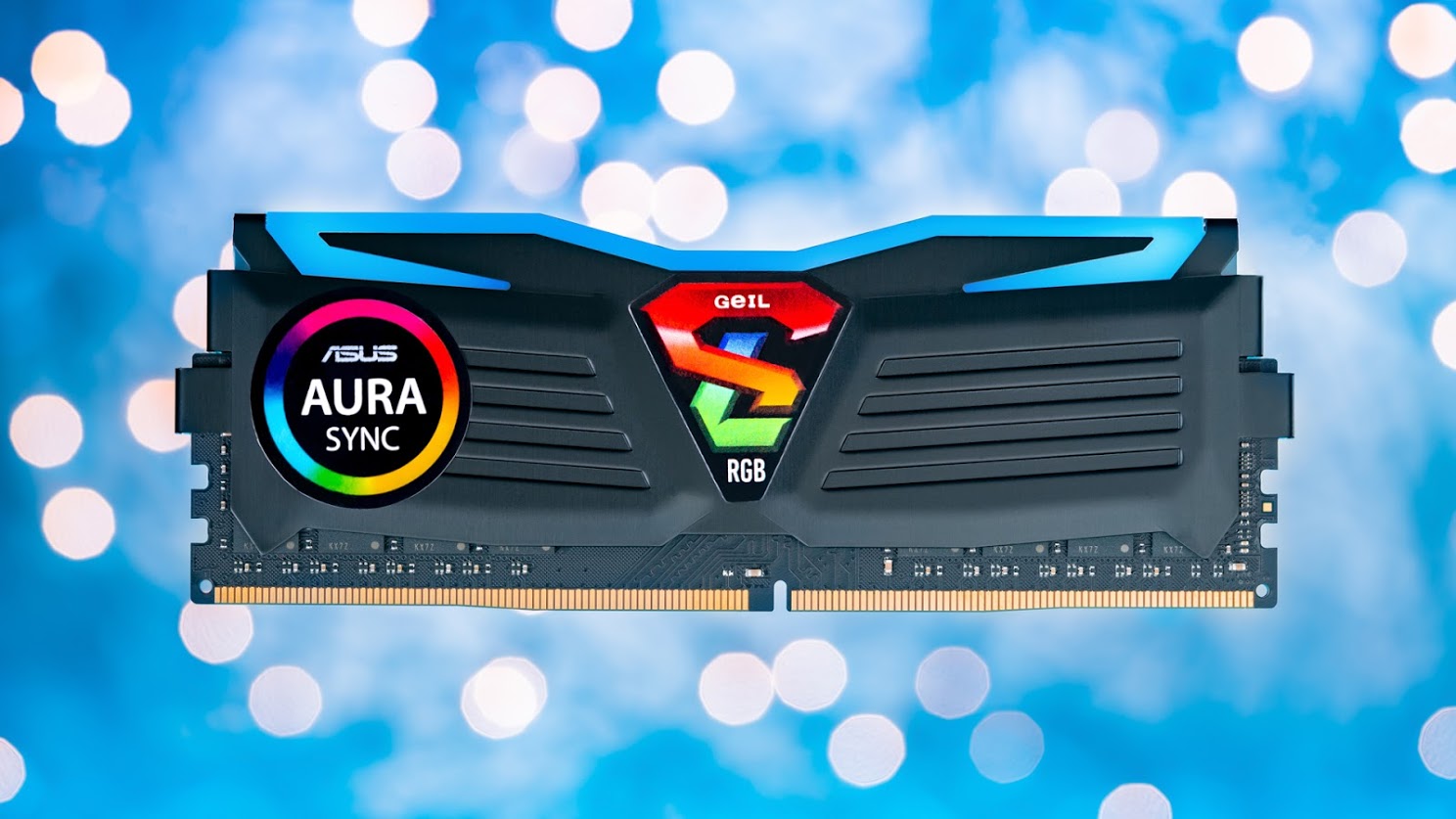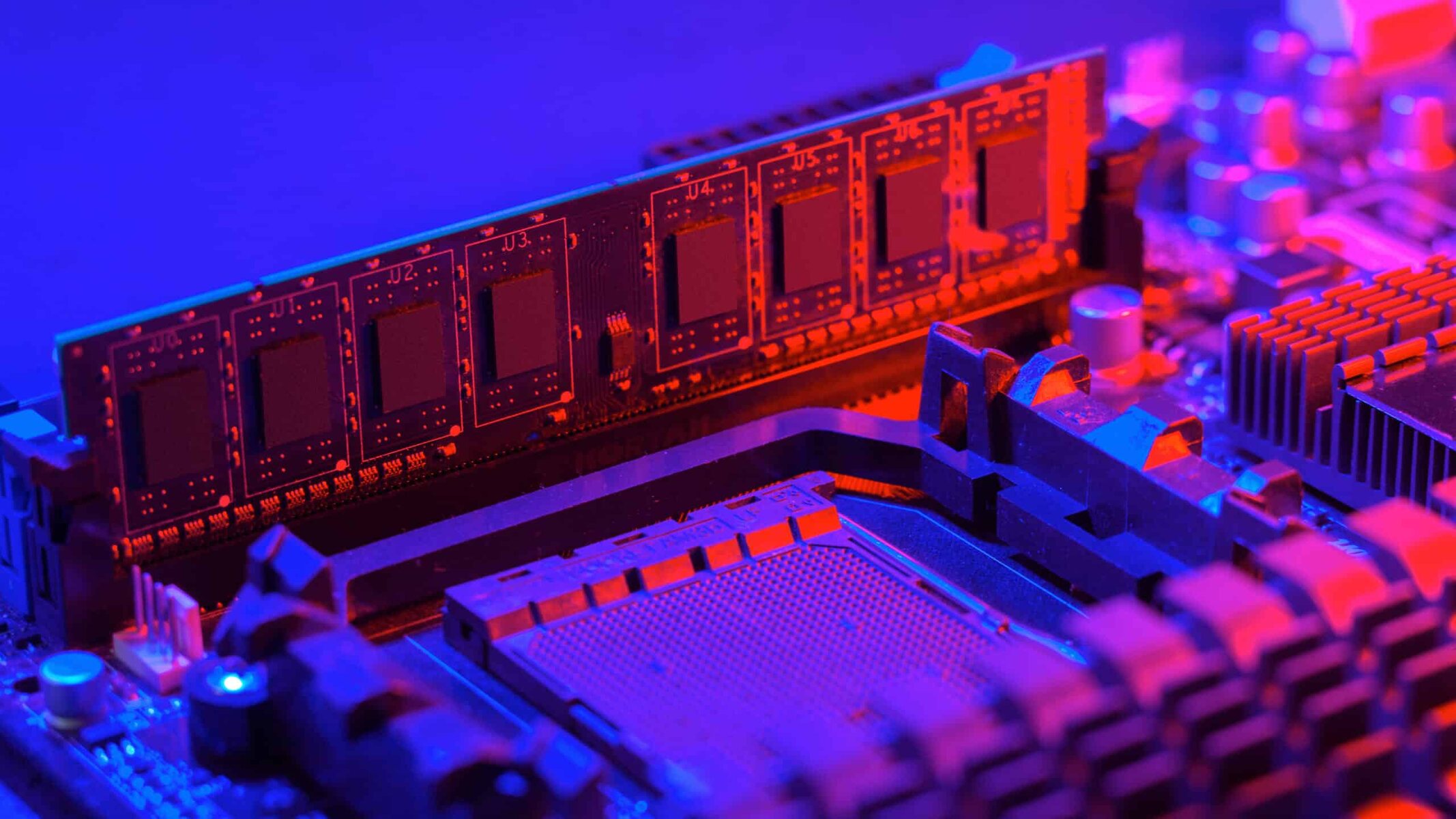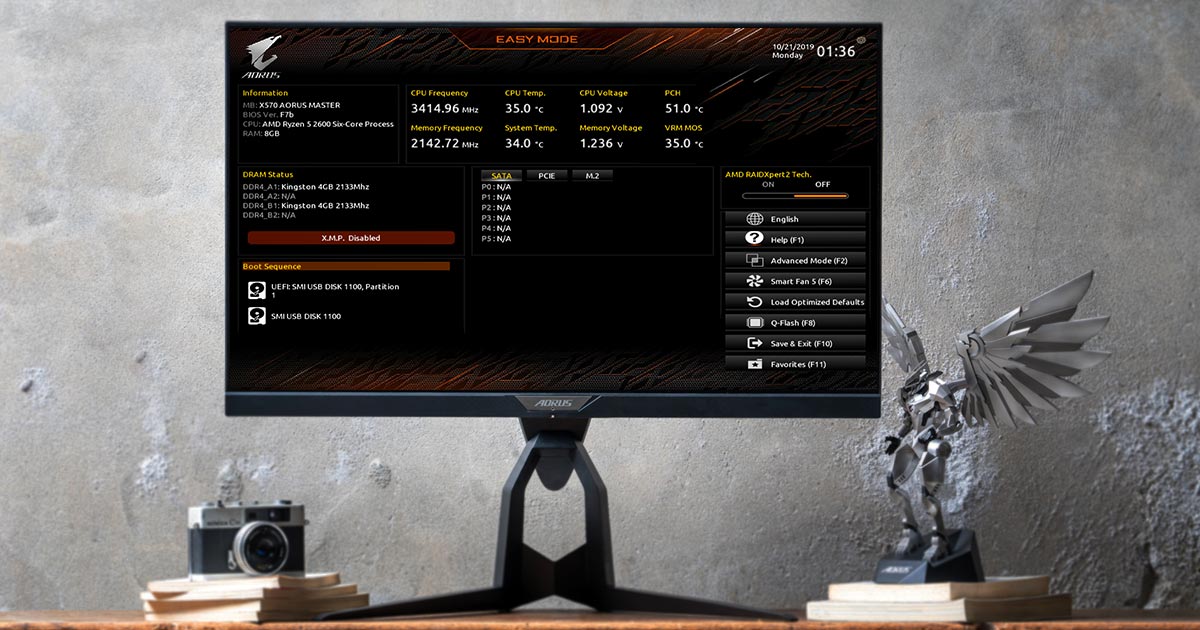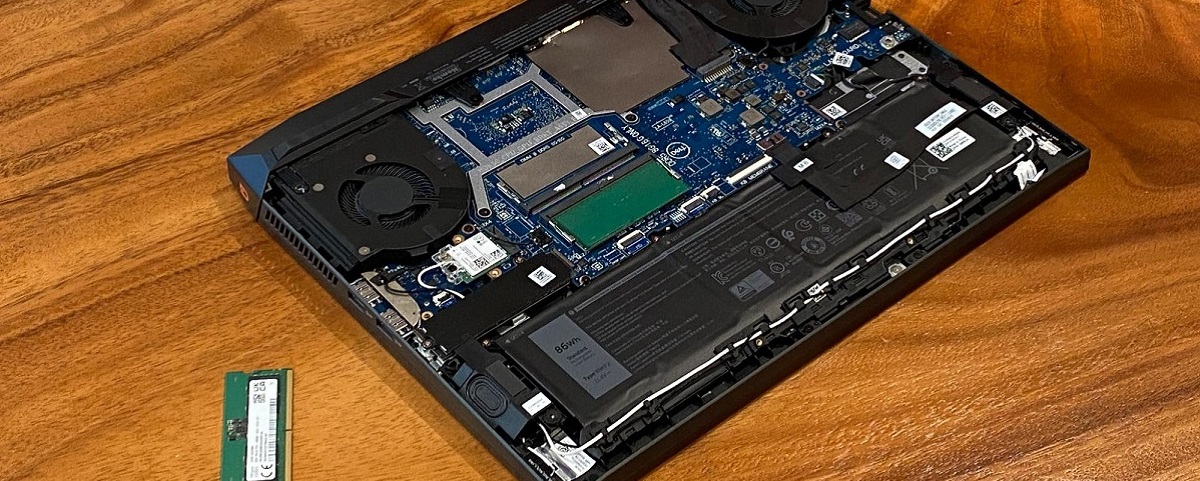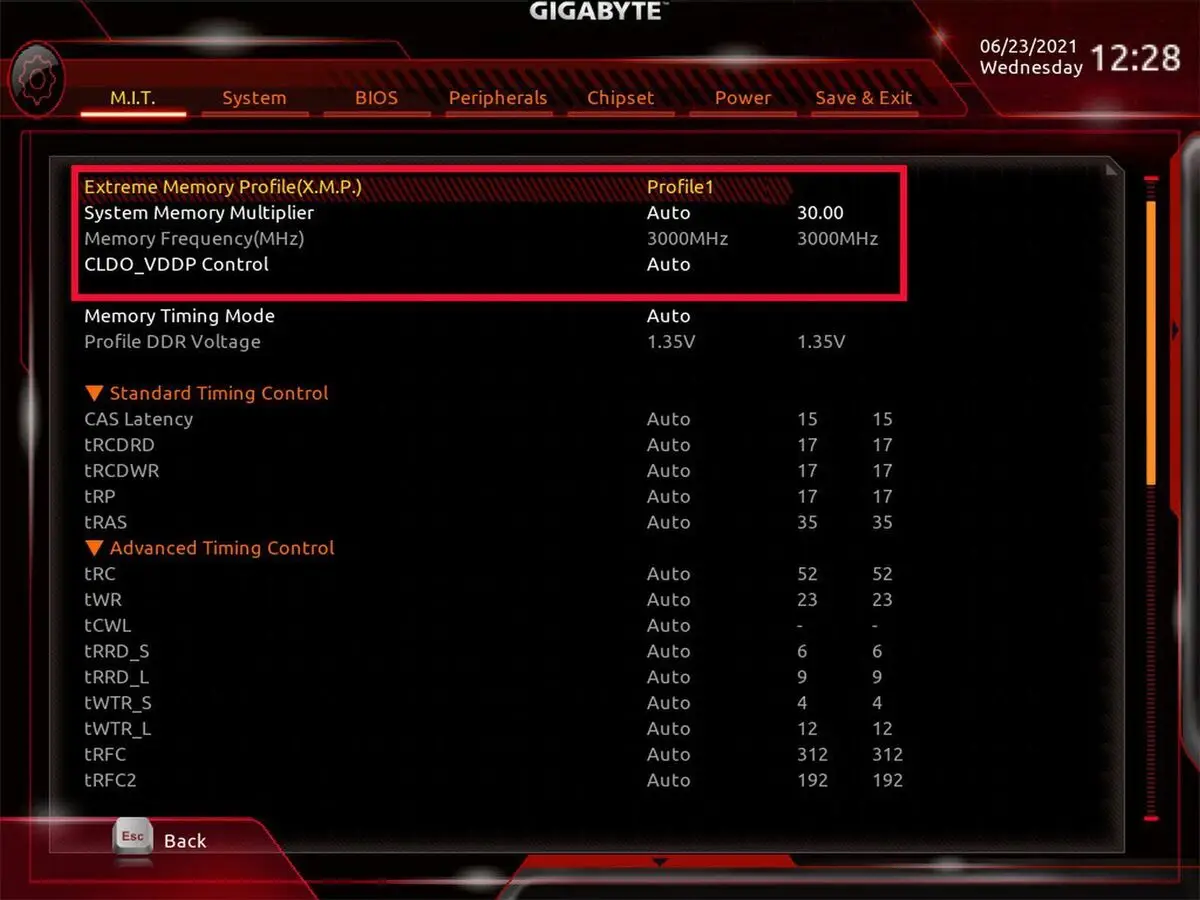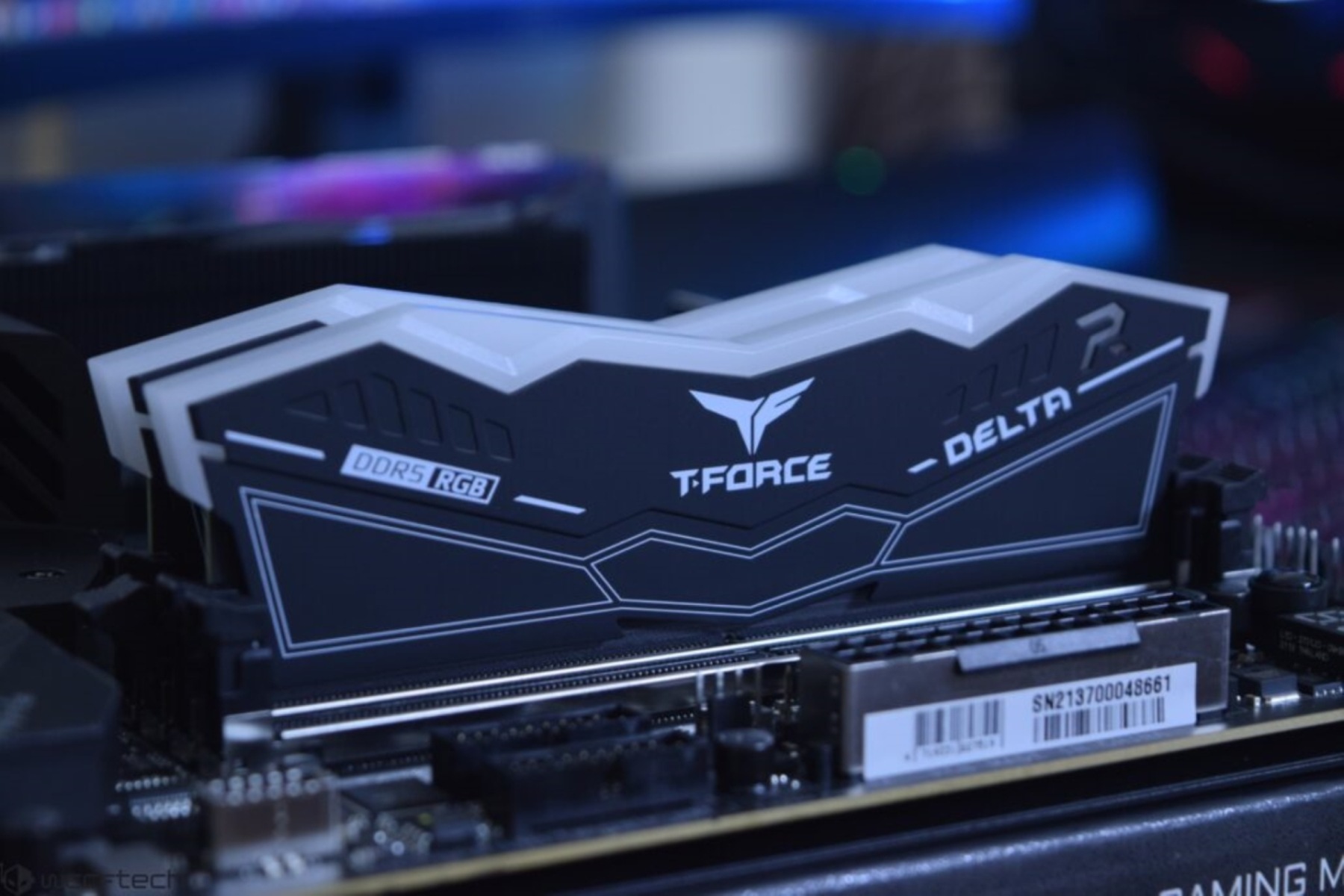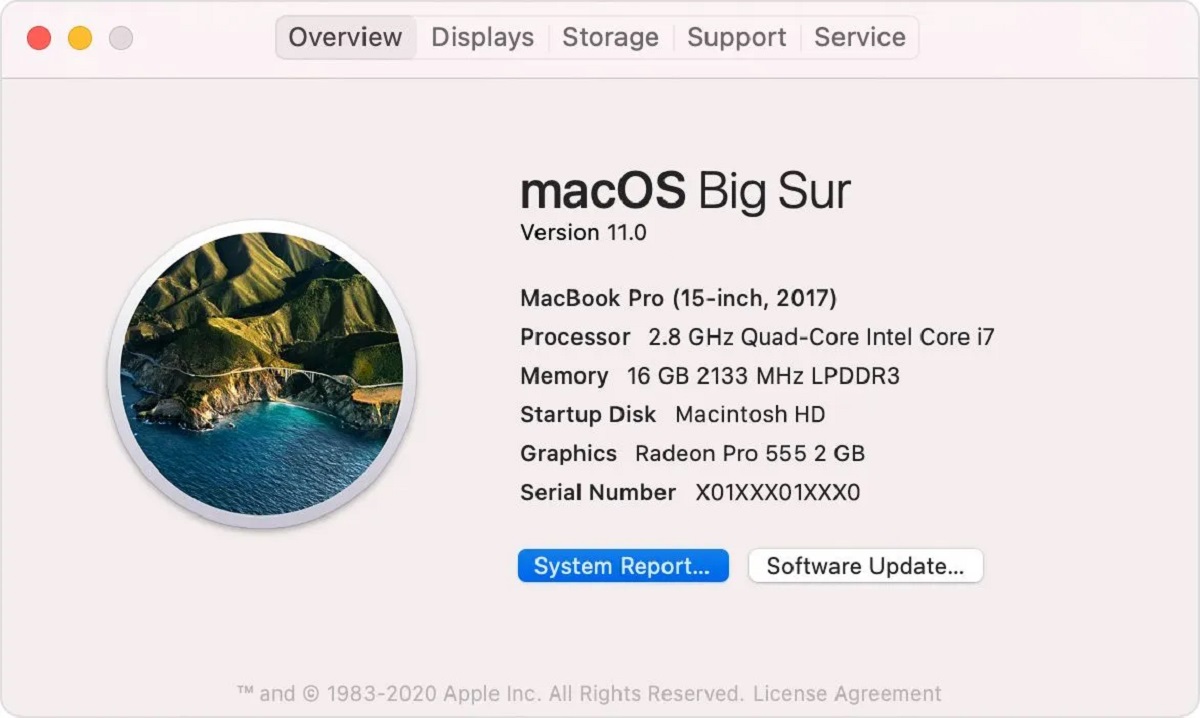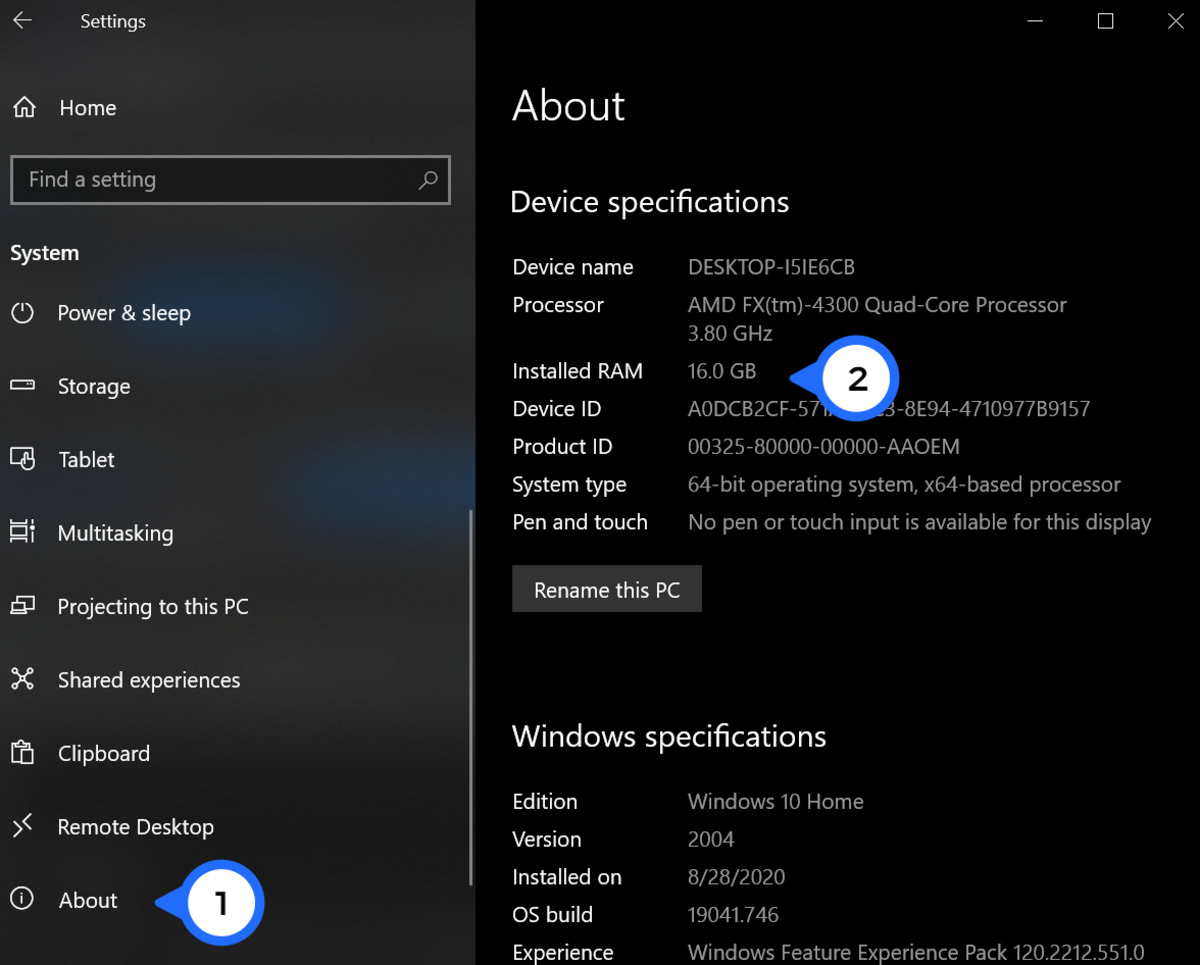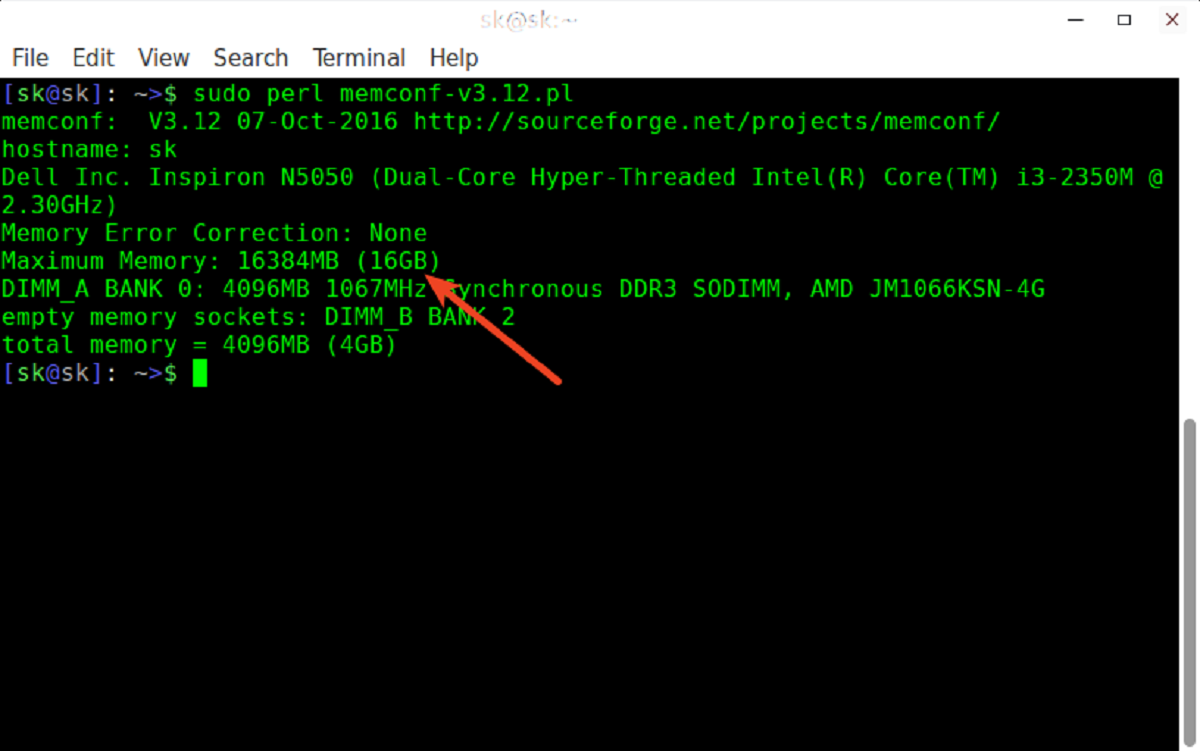Introduction
RAM (Random Access Memory) is an essential component of a computer system that plays a crucial role in its overall performance and speed. When it comes to optimizing your computer’s performance, understanding and monitoring your RAM speed can be highly beneficial.
In simple terms, RAM speed refers to the rate at which data is transferred between the RAM module and other components of the computer. It determines how quickly your computer can access and process data, which directly impacts the speed and responsiveness of different applications and tasks.
Whether you are a casual user or a tech enthusiast, knowing your RAM speed can help you identify any potential performance issues and take the necessary steps to resolve them. This article will guide you on how to check your RAM speed using various methods and provide insights into factors that influence RAM speed.
By understanding your RAM speed, you can make informed decisions regarding system upgrades, software compatibility, and overall system performance. So, let’s dive in and explore different ways to check your RAM speed and unleash the full potential of your computer.
Why is RAM Speed Important?
RAM speed is a critical factor in determining the overall performance and efficiency of your computer. It directly affects the speed and responsiveness of applications, multitasking capabilities, and overall system stability. Let’s delve into the reasons why RAM speed is important:
- Faster Data Access: RAM speed plays a crucial role in how quickly data can be accessed and retrieved from memory. A higher RAM speed allows for faster data transfer, resulting in reduced load times for applications and improved overall system performance.
- Smooth Multitasking: RAM speed is particularly important for multitasking. When you have multiple applications running simultaneously, RAM speed determines how efficiently the system can handle the concurrent processes. A higher RAM speed ensures smoother multitasking experiences, with minimal lag or slowdowns.
- Gaming Performance: If you are a gaming enthusiast, RAM speed can significantly impact your gaming experience. Higher RAM speeds allow for faster loading times, smoother gameplay, and reduced stuttering. It ensures that the computer can handle the demands of modern and resource-intensive games.
- Content Creation and Editing: RAM speed is crucial for tasks such as video editing, graphic design, and other content creation activities. These tasks often require working with large files and resource-intensive software. With higher RAM speeds, you can seamlessly handle large data sets, process complex effects, and render high-resolution media files.
- System Stability: Insufficient RAM speed can lead to system instability and crashes, especially when running memory-intensive applications. By having a compatible and optimized RAM speed, you can ensure the stability and reliability of your system, preventing unexpected errors or freeze-ups.
In summary, RAM speed plays a crucial role in determining the overall performance and efficiency of your computer. From faster data access to smooth multitasking and enhanced gaming experiences, optimizing your RAM speed can significantly improve your computing experience. In the following sections, we will explore different methods to check your RAM speed and uncover factors that influence its performance.
Methods to Check RAM Speed
There are several methods available to check the speed of your computer’s RAM. Let’s explore three common approaches:
- Checking RAM Speed Using Windows Task Manager: One of the simplest ways to check your RAM speed is by using the built-in Windows Task Manager. To access Task Manager, right-click on the taskbar and select “Task Manager” from the menu. In the Task Manager window, navigate to the “Performance” tab and click on “Memory.” Here, you will find information about your installed RAM, including the speed.
- Checking RAM Speed Using Third-Party Software: Another reliable method is to use third-party software designed specifically for monitoring system information. There are various free and paid tools available, such as CPU-Z, Speccy, and HWiNFO. These software provide detailed information about your computer’s hardware, including RAM speed.
- Checking RAM Speed Using BIOS Settings: If you prefer accessing the BIOS settings, you can check your RAM speed from there as well. Restart your computer and enter the BIOS setup by pressing a specific key during the boot process (usually displayed on your screen). Once in the BIOS, navigate to the “Memory” or “System” tab to look for the RAM speed information.
It’s worth mentioning that the method you choose may depend on your comfort level with accessing system settings and software installations. Additionally, keep in mind that the RAM speed reported by different methods may slightly vary due to factors such as system configuration and reporting methods.
Now that we know how to check RAM speed, let’s move on to the next section, where we will delve deeper into the factors that influence RAM speed.
Checking RAM Speed Using Windows Task Manager
One convenient way to check your RAM speed is by utilizing the built-in Windows Task Manager. Here’s how you can do it:
- Right-click on the taskbar at the bottom of your screen and select “Task Manager” from the context menu. Alternatively, you can press “Ctrl + Shift + Esc” on your keyboard to open Task Manager.
- In the Task Manager window, click on the “Performance” tab at the top.
- From the list of options on the left-hand side, select “Memory.”
- Under the “Speed” section, you will find the current speed of your installed RAM. It is typically displayed in megahertz (MHz).
The Windows Task Manager provides a quick and easy way to check your RAM speed without the need for any external software. However, it’s important to note that the Task Manager may not display all the detailed information about your RAM as compared to specialized monitoring tools.
In addition to the RAM speed, Task Manager also provides other valuable information about your computer’s memory usage, such as available memory, cached memory, and committed memory. This can help you monitor the overall performance of your RAM and identify any potential issues.
Keep in mind that the reported RAM speed may vary slightly from the specifications of your installed RAM due to factors like BIOS settings and system configurations. If you have recently upgraded or overclocked your RAM, the Task Manager may not reflect the updated speed until you restart your computer.
Now that you know how to check your RAM speed using the Windows Task Manager, let’s move on to the next section, where we will explore other methods to check your RAM speed, including using third-party software.
Checking RAM Speed Using Third-Party Software
If you desire more detailed information about your RAM speed and other system specifications, using third-party software can be an excellent option. Here are some popular tools you can utilize to check your RAM speed:
- CPU-Z: CPU-Z is a widely-used software that provides comprehensive information about your computer’s hardware. It displays details about your processor, memory, motherboard, and more. To check your RAM speed using CPU-Z, simply download and install the software, open it, and navigate to the “Memory” tab. Here, you will find the clock speed (in MHz) of your RAM modules.
- Speccy: Speccy is another reliable tool for obtaining detailed information about your system. Developed by Piriform, Speccy provides an easy-to-use interface and displays comprehensive information about your hardware components, including RAM speed. Install Speccy, launch the software, and click on the “RAM” category on the left-hand side to view your RAM speed.
- HWiNFO: HWiNFO is a powerful system information tool that offers extensive hardware monitoring capabilities. It provides detailed insights into your computer’s components and sensors, including RAM speed. After installing HWiNFO, open the program and navigate to the “Memory” section to view information such as clock speed, timings, and more.
These third-party software tools offer more in-depth information about your RAM compared to the Windows Task Manager. They not only display the RAM speed but also provide additional details such as module type, timings, and supported features. This level of detail can be beneficial for advanced users, system builders, and enthusiasts who want a comprehensive understanding of their computer’s hardware configuration.
It’s important to note that when using third-party software, always download it from trusted sources to ensure its safety and reliability. Additionally, keep in mind that each software tool may have a slightly different interface and layout, but they all serve the purpose of providing detailed information about your RAM speed and other system specifications.
Now that we’ve explored how to check RAM speed using third-party software, let’s move on to the next section, where we will discover another method—checking RAM speed using BIOS settings.
Checking RAM Speed Using BIOS Settings
If you prefer accessing the BIOS settings, you can also check your RAM speed from there. Here’s a step-by-step guide on how to do it:
- Restart your computer. As soon as your computer starts booting up, you will see a screen with instructions to enter the BIOS setup. Common keys to access the BIOS include “Delete,” “F2,” “F10,” or “Esc.” The specific key may vary depending on your computer’s manufacturer.
- Once you’re in the BIOS setup, navigate to the “Memory” or “System” tab using the arrow keys on your keyboard.
- Look for a section that displays information about your RAM, such as “Memory Information” or “Memory Configuration.”
- Within that section, you should find the RAM speed listed, usually displayed in megahertz (MHz).
- After noting the RAM speed, you can exit the BIOS setup by following the on-screen instructions or pressing the designated key (often “Escape” or “F10”) to save the changes and restart your computer.
Checking your RAM speed through the BIOS settings provides direct access to the hardware configuration of your computer. This method ensures reliable and accurate information about your RAM speed, as the BIOS is the source of control and management for your system’s hardware components.
However, it’s important to note that accessing the BIOS settings requires caution, as any changes made can potentially affect the stability and functionality of your computer. Therefore, it’s recommended to only navigate through the BIOS settings if you are familiar with the process or seek guidance from reliable sources.
Now that we have explored the different methods to check RAM speed, it’s essential to understand the factors that influence RAM speed, which we will delve into in the next section.
Factors Influencing RAM Speed
RAM speed is influenced by various factors that can impact its overall performance and efficiency. Understanding these factors can help you make informed decisions when it comes to selecting, upgrading, and optimizing your RAM. Here are some key factors that influence RAM speed:
- RAM Type: The type of RAM you have installed can significantly affect its speed. DDR3, DDR4, and the latest DDR5 are different generations of RAM with varying capabilities. Each generation offers improved speeds and increased bandwidth, with DDR5 being the fastest and most advanced option available.
- Clock Speed: The clock speed of RAM, measured in megahertz (MHz), determines how quickly data can be read from or written to the memory module. Higher clock speeds result in faster data transfer rates and better overall performance. Overclocking RAM can also increase the clock speed beyond its default value, but this should be done cautiously and with proper cooling to avoid instability.
- Timings: RAM timings or latency refer to the time it takes for the RAM to respond to a request for data. It is denoted by four numbers, such as 9-9-9-24. Lower timings indicate faster responsiveness and improved performance. However, the impact of timings on real-world performance is generally minimal compared to other factors.
- Bus Speed: RAM speed is also influenced by the bus speed of the motherboard. The bus speed, measured in megatransfers per second (MT/s), determines the maximum speed at which data can be transferred between the RAM and other components of the computer. It is important to ensure that the RAM speed is compatible with the motherboard’s bus speed for optimal performance.
- System Configuration: The overall configuration of your computer, including the processor, motherboard, and other hardware components, can impact the RAM speed. A powerful processor and a motherboard that supports higher RAM speeds can ensure better performance and compatibility.
- Operating System and Software: The operating system and software running on your computer can also influence RAM speed. Optimized operating systems and resource-efficient software can help maximize RAM performance, while poorly optimized software or excessive background processes may hinder performance.
It’s important to consider these factors when selecting RAM modules or upgrading your existing RAM. Ensure compatibility with your motherboard, consider the requirements of your applications and tasks, and seek guidance from reputable sources and experts to make informed decisions regarding your RAM speed.
Now that we have explored the factors influencing RAM speed, let’s move on to the final section, where we will discuss how to improve RAM speed and optimize its performance.
How to Improve RAM Speed
If you want to enhance your computer’s performance by improving RAM speed, there are several steps you can take. Follow these suggestions to optimize your RAM speed and get the most out of your computer:
- Upgrade to Faster RAM: Consider upgrading your RAM modules to a higher speed variant. DDR4 or DDR5 RAM modules offer faster speeds and improved performance compared to older DDR3 modules. Ensure compatibility with your motherboard and choose RAM modules with higher clock speeds for an instant boost in RAM speed.
- Enable XMP/DOCP: Most modern motherboards support XMP (Extreme Memory Profile) for Intel systems or DOCP (Direct Overclock Profile) for AMD systems. Enabling XMP or DOCP in the BIOS settings allows the RAM to operate at its rated speed, ensuring optimal performance. Consult your motherboard’s manual for instructions on how to enable this feature.
- Check and Optimize System Configuration: Ensure that your computer’s hardware configuration is optimized for RAM speed. This includes using a compatible motherboard with the appropriate bus speed, a powerful processor, and sufficient power supply. An inadequately configured system may bottleneck RAM speed, so make sure all components work harmoniously together.
- Keep Your System Clean: Regularly perform system maintenance tasks such as cleaning unnecessary files, uninstalling unused programs, and keeping your operating system up to date. This helps to create more available memory for your RAM and allows it to function more efficiently.
- Monitor Resource Usage: Use task manager or performance monitoring tools to keep track of your system’s resource usage. This can help you identify any processes or applications that are consuming excessive memory and causing performance issues. Close unnecessary applications and optimize resource usage to free up memory for more demanding tasks.
- Avoid Overclocking: While overclocking RAM can increase its speed, it should be done with caution. Overclocking can void warranties, generate excess heat, and potentially destabilize your system. Only attempt overclocking if you have the necessary knowledge and experience, and ensure proper cooling to avoid overheating issues.
- Consider SSD Upgrade: If you’re still using a traditional hard drive, consider upgrading to a solid-state drive (SSD). SSDs offer much faster read and write speeds compared to HDDs, resulting in improved overall system performance, including faster data access from RAM.
By following these tips, you can enhance your RAM speed and optimize overall system performance. Remember to always refer to your system’s documentation and seek professional advice if needed when making any hardware or software changes.
With a properly configured and optimized RAM speed, you can enjoy faster application loading times, smoother multitasking, and an overall more efficient computing experience.
Now that we have explored ways to improve RAM speed, we can conclude with a summary of the key points discussed.
Conclusion
Understanding and monitoring your RAM speed is crucial for optimizing your computer’s performance and ensuring a smooth computing experience. By checking your RAM speed using methods like Windows Task Manager, third-party software, or accessing the BIOS settings, you can gather valuable information about your computer’s RAM and take necessary steps to improve its speed.
RAM speed plays a vital role in data access, multitasking capabilities, gaming performance, content creation, and system stability. Factors like RAM type, clock speed, timings, bus speed, system configuration, and software optimization influence the overall RAM speed. Upgrading to faster RAM, enabling XMP/DOCP, checking system configuration, regular system maintenance, monitoring resource usage, and considering SSD upgrades are effective ways to improve RAM speed.
By optimizing your RAM speed, you can experience faster application loading times, smoother multitasking, improved gaming performance, and overall system stability. However, it’s crucial to ensure compatibility, follow best practices, and seek expert advice if needed when making any changes to your system’s RAM.
In conclusion, taking the time to understand and check your RAM speed allows you to make informed decisions regarding hardware upgrades, software optimization, and other system configurations. By optimizing your RAM speed, you can unlock the full potential of your computer and enjoy a more efficient and responsive computing experience.







